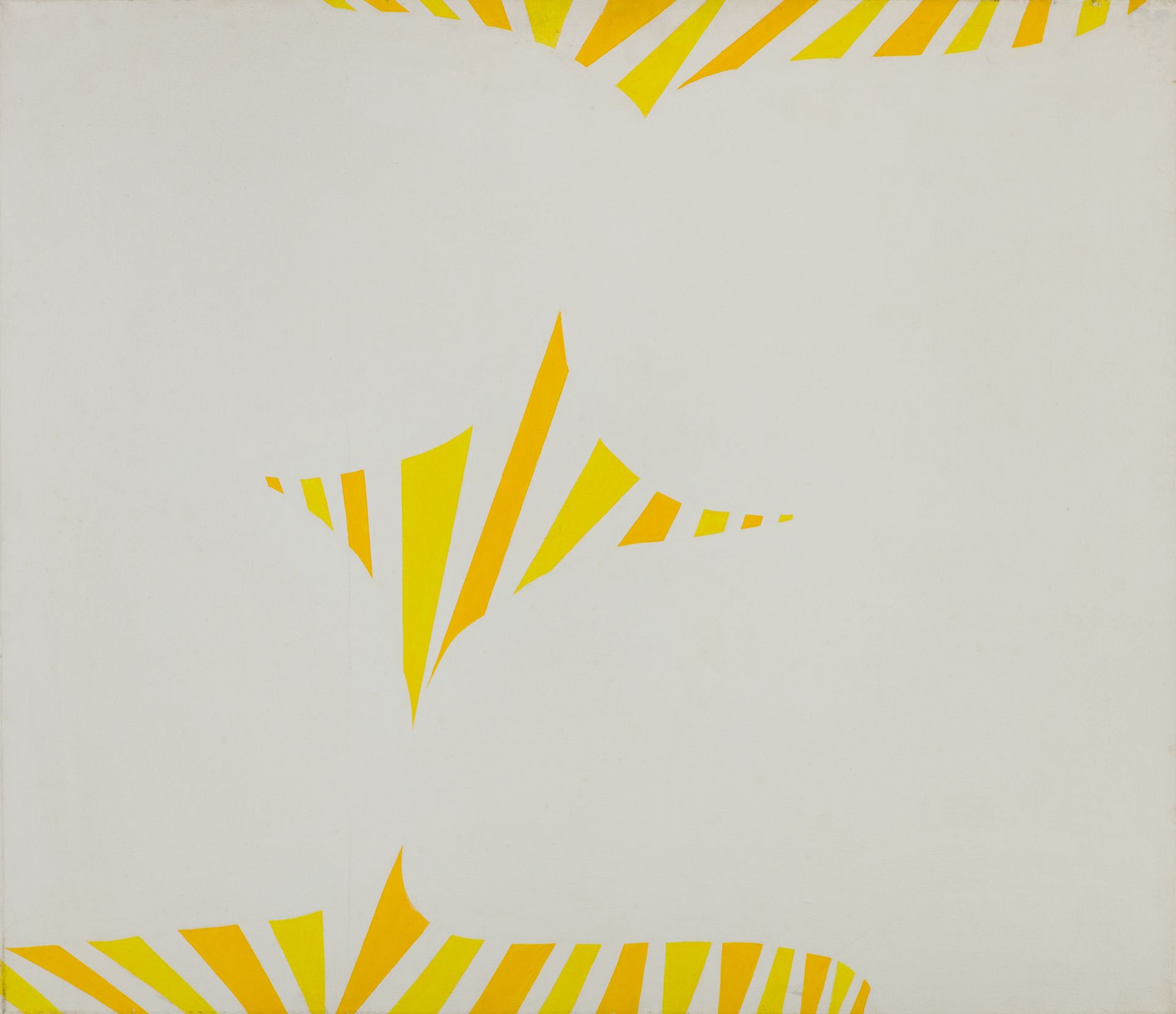
Francesco Guerrieri (1939-2015) is among the artists researching Gestalt Art and Kinetic Art in Italy. He is known for his studies on phenomena linked to visual perception, for the faithfulness to painting and the intuitive and anti-dogmatic method he always adopted. He shares with many of his peers the will of giving back to art a rational and objective communicative value that goes beyond the irrational and subjective aptitude characterising large part of Italian and international artistic experiences flourished in the postwar period (Gestural and Material researches within Informal Art movement). As stated in the declaration of poetics of Sperimentale p., a collaborative project that engaged Guerrieri in the Sixties, founded with the artist and his partner for life Lia Drei, the task of art is “to find or form language elements effective between subjects […] It is necessary to analyse and experiment with elements until they reach an objective effectiveness in relationship to form and to the viewers the form engages with.In these visual elements and forms, the objective and intersubjective effectiveness turns into an optic-perceptive one”. Moreover, according to what claimed in the 14th International Assembly of Artists, Critics and Art held in Verucchio in 1965, “the artist has to come down from his ivory tower and seek elements to communicate with the other subjects of the contemporary society”.
The painting Analisi dell’apparenza N.2, created in 1974, is part of the cycle Il Quadro Luce (The Light Painting), which was started by the artist around the end of the Sixties and marks an already mature stage of his reflections and experimentations. The art critic and historian Filiberto Menna (Il quadro-pensiero di Francesco Guerrieri, 1975) observes that in this period Guerrieri’s artworks show an increased semantic thickness and a new symbolic tension, contrary to the paintings created in the previous decade, which were based on a pure syntactic-structural articulation; contextually the signs acquire more fluidity and the compositions are freer.
As all the light-paintings, also Analisi dell'apparenza N.2 is composed of a micro chromatic shift, given by the combination of two different tones of yellow plus white. The irregular bands of colours used by the artist group along the lower and upper border of the canvas and in a small central area, while large “quiet void zones” (Maria Torrente, 1994, translated from Italian) are present in the majority of the painting: Guerrieri questions the conventions of visual interpretation we are used to, bringing into play the relation figure–ground: a crucial theme in the psychology of Gestalt. In the painting, the ambivalence of this relation activates a “positive-negative” dynamic of exchange, according to which the background becomes figure and vice versa. As claimed by the artist: “The work opens up to ambiguity, thanks to its perceptual ambivalence and also thanks to complex multifaceted figurations, until the "negative" emerges and the "void" becomes “positive”. These contradictions don’tlead to an impoverishment or refusal of the original code, but in the end to an enrichment, extension, deepening” (1973).
By stimulating the perception of the viewers, Francesco Guerrieri’s paintings aim to awaken the critical sense of their gaze and increase their ability for visual interpretation and aesthetic evaluation of the perceptible world.